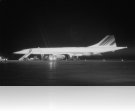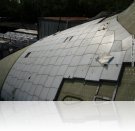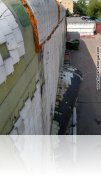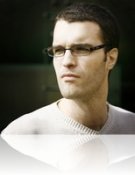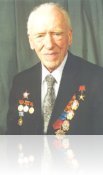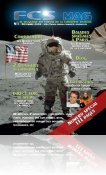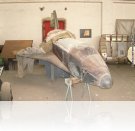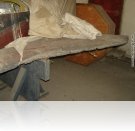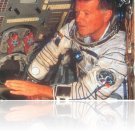
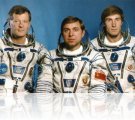
Jean-Loup Chrétien went to space on June 24, 1982. He then becomes the first occidental to flight in space (nor Sovietic, nor American) but also the first French cosmonaut. He stayed some days in space aboard the Salyut space station to proceed to experiences for the CNES agency.
In 1988, he had the chance to go again, also with the Soviets, but aboard the brand new MIR station for a joint mission, Aragatz, between France and USSR. The launch date was settled at November 26, 1988, but 11 days earlier another historical event took place.
Jean-Loup Chrétien and his Soyuz TM-7 partners, Alexander Volkov and Sergei Krikalev, arrived at Baikonur weeks before the launch to finish their training on the cosmodrome. Early in the morning of November 15, they are waken up by the staff of the hotel, which said them that a launch is going to take place. So the small group, the crew, the backup crew and some members of the hotel went upstairs on the building’s roof and watch in the direction of the lunar launch pad enlightening the night. At that time the USSR was in a bad financial state and the Energia-Buran program was suffering financial cuttings, some people said that if the launch doesn’t take place this morning the shuttle will never be launch.
Then suddenly a big light appeared at the horizon. Spectacular and blinding, this light began to go up to the clouds base which it reached in few seconds, going from this incandescent dot to a magnificent light disc which slowly blow out as Buran was mounting in the clouds. Buran lifted off under an awful weather, during an inky night, and must came back to Baikonur just few hours later and succeed her first automatic landing. It’s was also her first flight, without crew onboard. We stayed disbelieving, and watching during hours the evolution of the weather. It was clear that our russians colleagues had took lots of risks. We learned later that the chances of success were less than 50%. [...]
The local TVÂ broadcasted the rest of the events. Buran began her reentry in the atmosphere at the right time, and we were watching with anxiety the picture shoot by the television camera orientated to the base of the clouds in the landing strip axis. The ceiling was low, it continued to snow, and a strong crosswind was blowing. Suddenly Buran escaped from the clouds, some 20 to 30 seconds before landing. We were holding our breast and watching this majestic vehicle beginning its circle before touching down. The landing was magnificent, and Buran stopped majestically in a tremendous applause. Ignoring the risks by getting close too quickly, a group of engineers and technicians ran toward this hero to acclaim it with enthusiasm. Vodka was flowing, even knowing that despite her success it should be her last flight.
Extract from the book: Rêves d’étoiles (Dreams of stars), Jean-Loup Chrétien.
Visit of François Mitterrand, for the launch of JL. Chrétien, in the hangar 112.
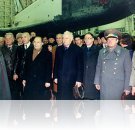
Presidential Concorde on the Ybileiniy airport (Buran’s landing strip).
